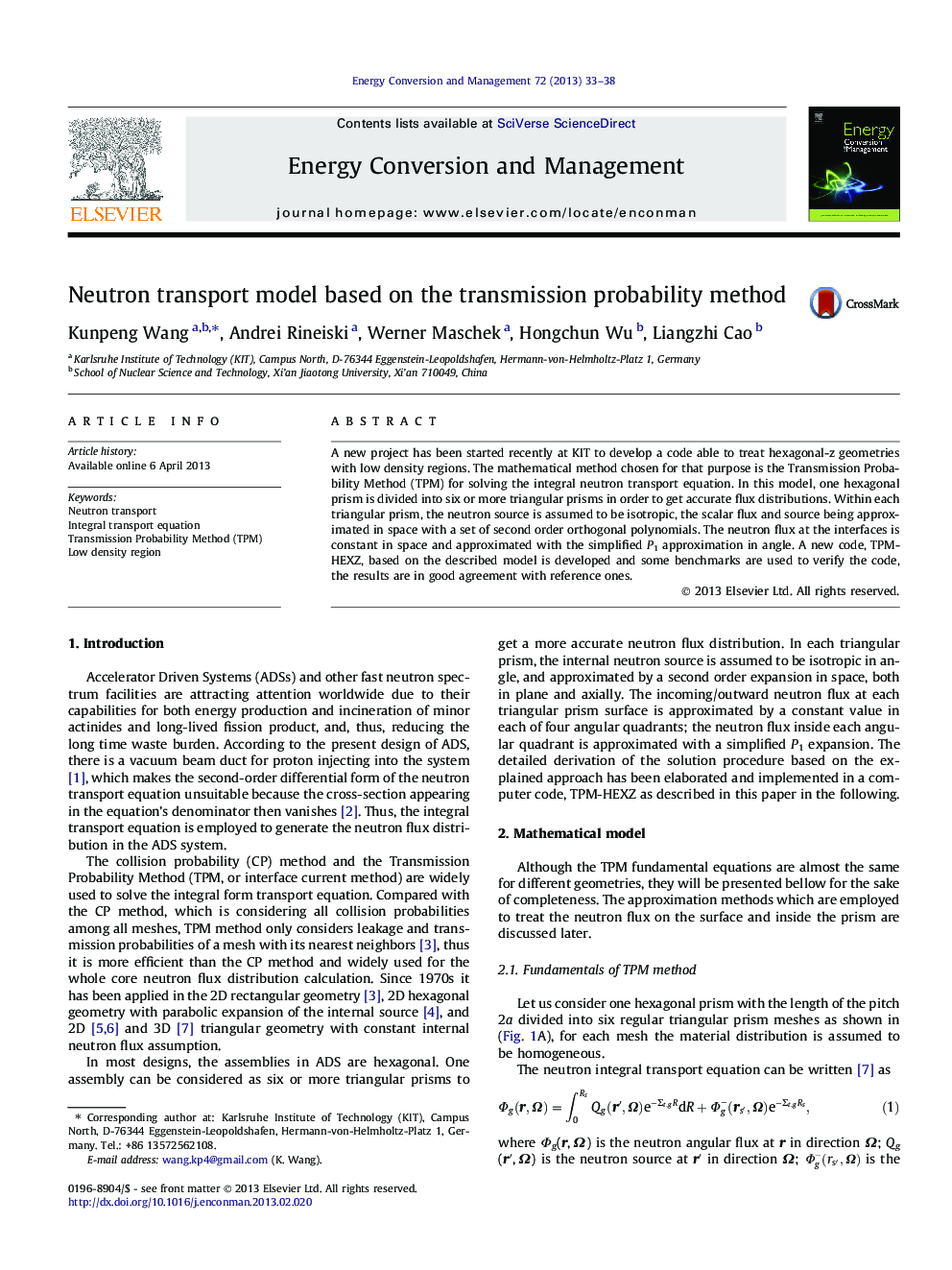| Article ID | Journal | Published Year | Pages | File Type |
|---|---|---|---|---|
| 772093 | Energy Conversion and Management | 2013 | 6 Pages |
•One hexagonal assembly is divided into 6 triangular prisms in order to get accurate flux distributions.•Transmission probability method is applied to solve the integral neutron transport equation.•The neutron flux and source are expanded spatially by a set of second order orthogonal polynomials.•The neutron flux at the interface is approximated with simplified P1 approximation.
A new project has been started recently at KIT to develop a code able to treat hexagonal-z geometries with low density regions. The mathematical method chosen for that purpose is the Transmission Probability Method (TPM) for solving the integral neutron transport equation. In this model, one hexagonal prism is divided into six or more triangular prisms in order to get accurate flux distributions. Within each triangular prism, the neutron source is assumed to be isotropic, the scalar flux and source being approximated in space with a set of second order orthogonal polynomials. The neutron flux at the interfaces is constant in space and approximated with the simplified P1 approximation in angle. A new code, TPM-HEXZ, based on the described model is developed and some benchmarks are used to verify the code, the results are in good agreement with reference ones.
